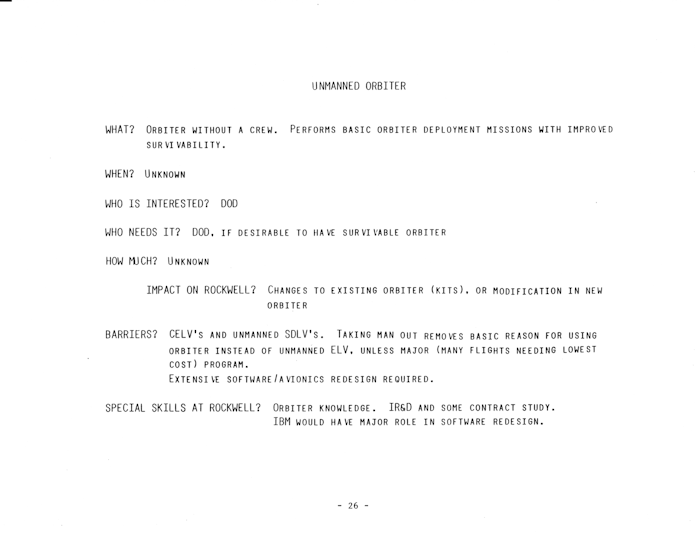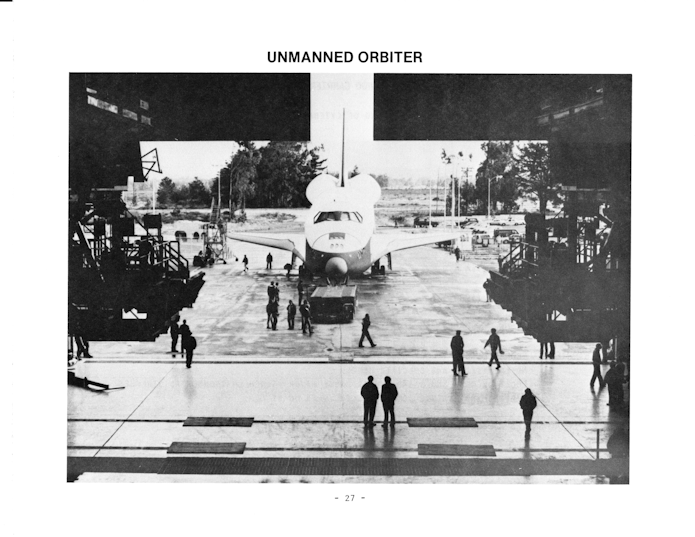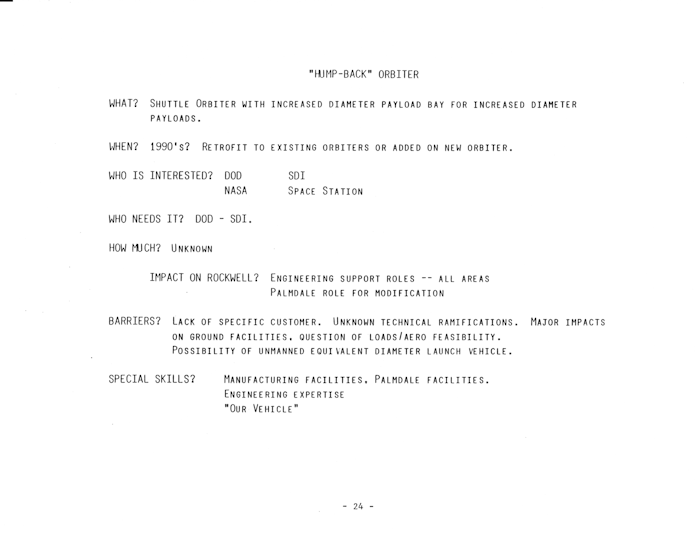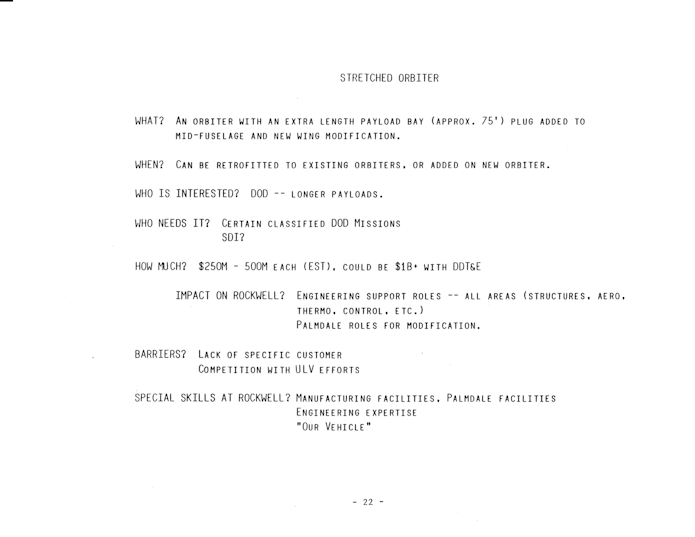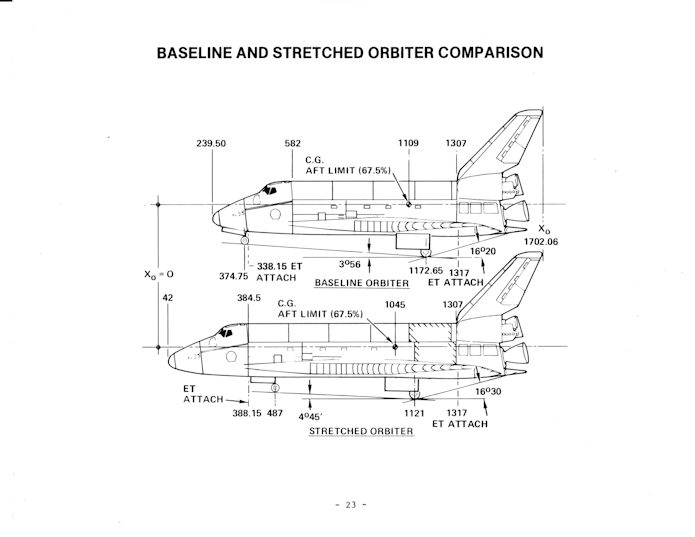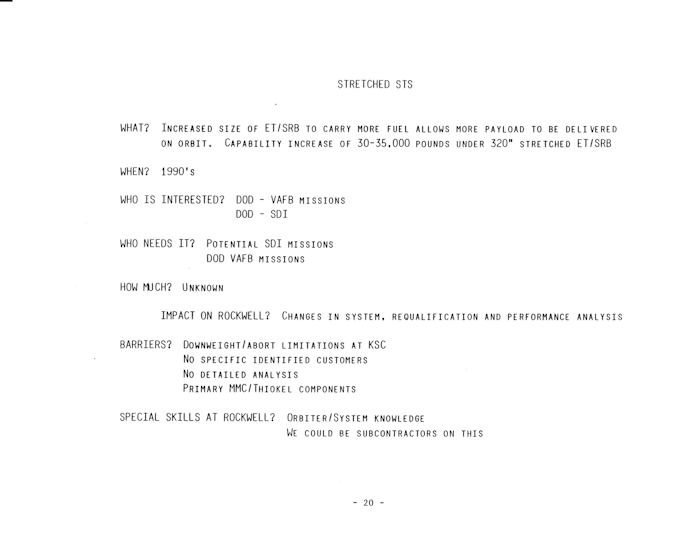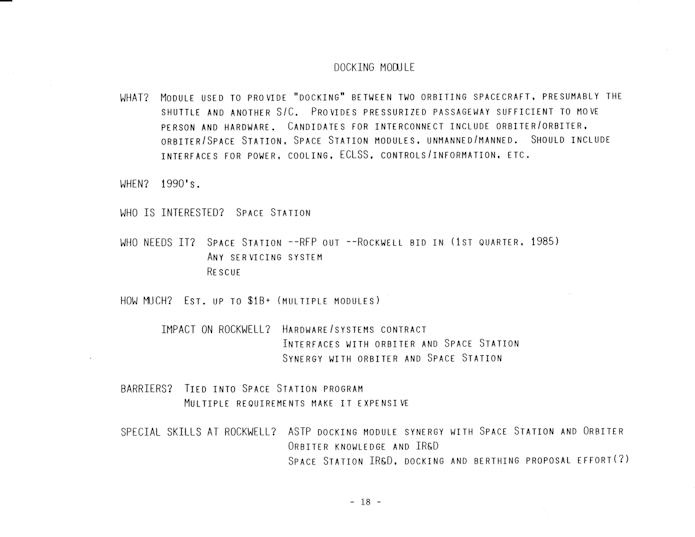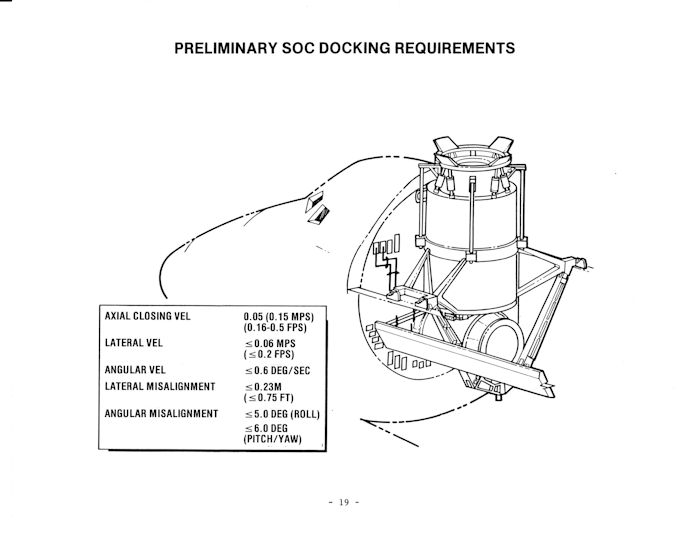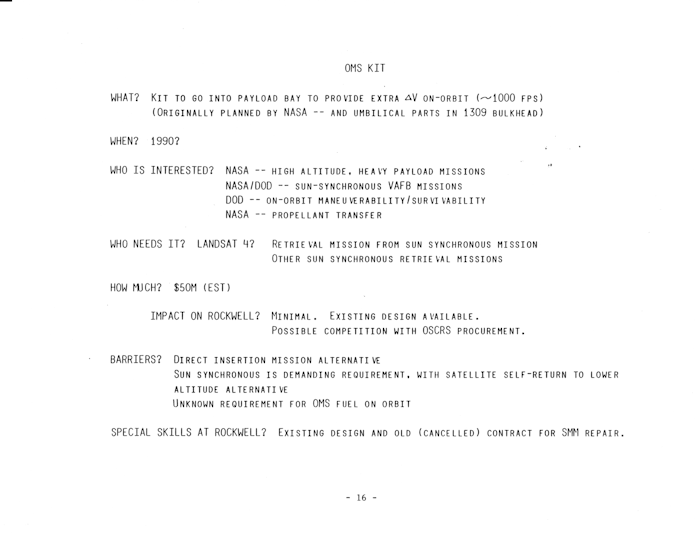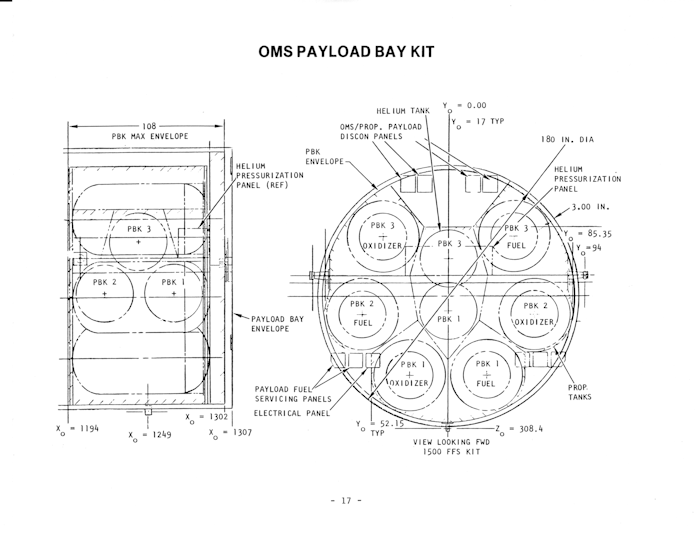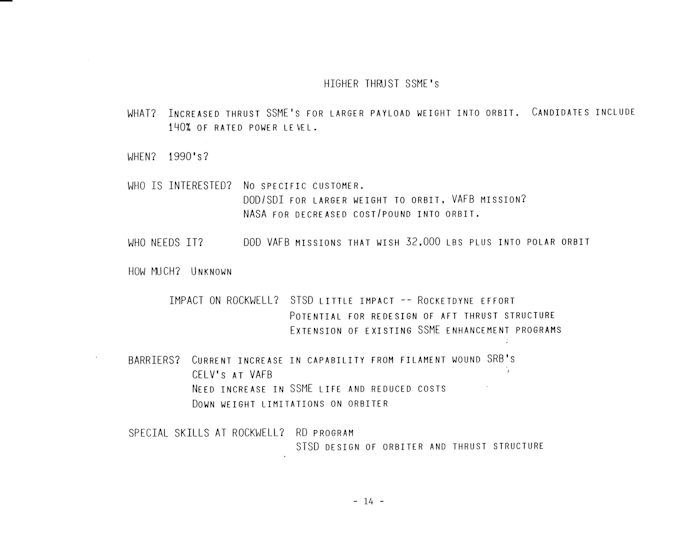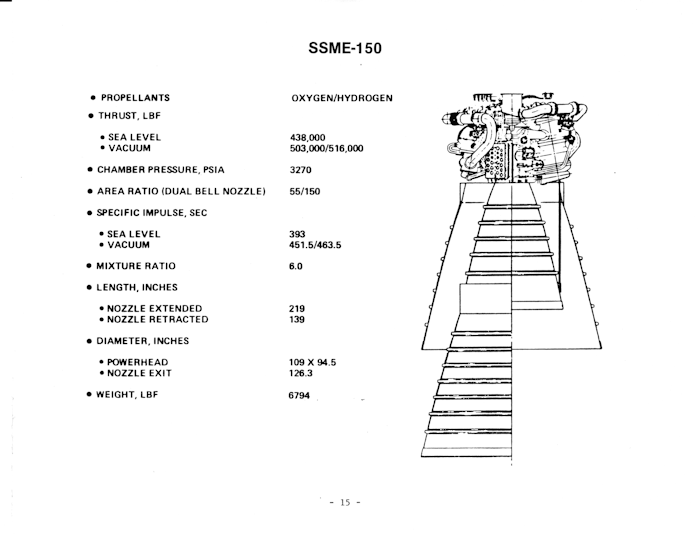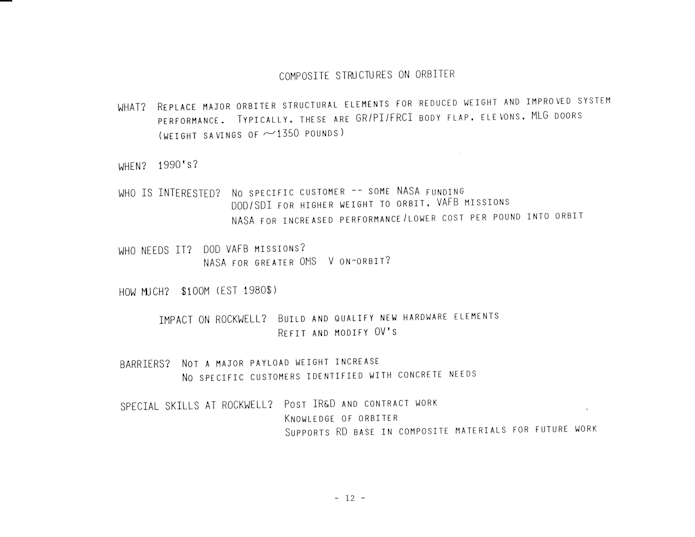Continuing…
In 1985 Rockwell pondered the idea of an unmanned Orbiter. The US did not proceed with that concept, while the Soviets did with their Buran. It was an interesting notion and for the time reasonably advanced tech… but it’s clearly a very silly idea (even more so with Buran). The whole purpose of the Orbiter as compared to any other launch vehicle is to *return* stuff. With the Space Shuttle, the stuff it returned was sometimes payload, always avionics, engines and crew. Making the Orbiter unmanned means… why the hell are you launching a crew cabin? Buran was even worse; it didn’t even bring back the main engines.
